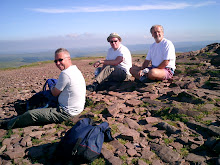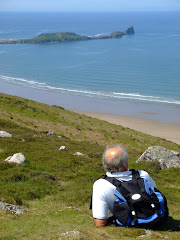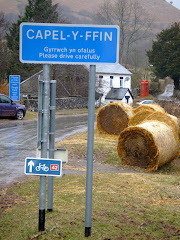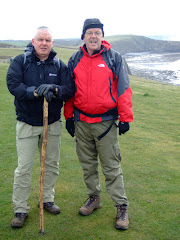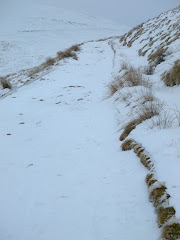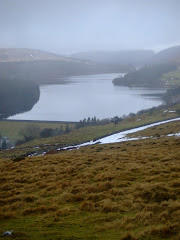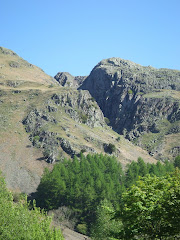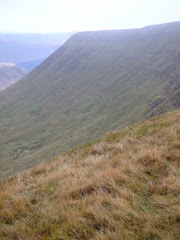.JPG)
Leaving Blaenau Gwent (where the Eisteddfod 2010 is being held – Welsh Learner of the Year on the Maes today), you soon cross over the border into Powys and on the descent from Mynydd Llangynidr the western flank of the Black Mountains is laid out before you in it’s magnificent splendour.
Although the dark storm clouds were gathered over the A470 Heads of the Valley the sun was breaking through less than twenty minutes later as the journey weaved it’s way north of Crickhowell.
.JPG)
The main purpose of the day was to bag a few South Wales Nuttalls (peaks over 2,000 feet…….but more of that in another posting).
The walk started along a narrow country lane bordered by hedges of hazel and holly. After leaving the road just past Pentwyn Farm, I followed the trail that leads from Tir Y Nant into the forest and starts to climb almost immediately gaining height quickly. Before too long I was in open countryside only to disappear into the eerily quiet and darkness of the forest itself for a relatively short period.
.JPG)
Crossing a stile to leave the canopy of trees the trail leads diagonally upwards along a heathery clad hillside with evidence of the early stages of the late Summer wimberry harvest. The sun had started to shine and it was getting warmer as the sheep tracks suddenly started to lead off in all directions! Eventually after about 45 minutes and 750 feet of ascent I joined a wide pathway that runs along the crest of the ridge.
After walking for a mile on the ridge I climbed an insignificant path to a forlorn cairn that marked the heather-clad peak of Pen-twyn Mawr, the first Nuttall of the day at 658 metres. This was also a signal to celebrate the first mini-break of the walk.
.JPG)
The more distinctive summit of Pen-y-Gadair Fawr was a further mile in the distance. The wind had picked up as I approached the second highest peak in the Black Mountains at 800 metres, the windswept summit gained pride of place as the second Nuttall of the day.
.JPG)
Although Waun Fach at 810 metres is actually the highest peak in the Black Mountains (and another Nuttall bagged on the day) it is not very attractive, surrounded by dark peat and approached over coarse boggy grass . However, there were a number of walkers arriving or departing at this central hub.
.JPG)
The journey continues to the west as I departed Waun Fach as the route heads towards Pen Trumau which is a rugged interesting start to the downhill section. Passing through the ‘V’ shaped shoulder at the foot of the col, the original intention was to cut to the left and return to the starting point by the low level Grwyne Fechan route crossing the Hermitage bridge, but I couldn’t resist climbing first Mynydd Llysiau at 663 metres and then Pentwynglas at 646 metres (where I enjoyed another brew) to bag two additional Nuttalls (making 5 in total for the day).
.JPG)
The walk came to a conclusion after the long steady descent down Tal Trwynau with Pen Allt-mawr towering to the west and really MASSIVE awesome views of Grwyne Fechan and Cwn Banw to the east. Passing through some unusual dis-used quarry workings with a particularly distinctive cairn, I finally left the hillside through some open fields and a rickety lane.
This was a really superb days walking in very good conditions.
The total distance covered was 18 kilometres or 11 miles in four and a half hours. A link
to the map of the route is here.
All of the photographs taken on this walk can be viewed
here. Select 'slideshow' for automated viewing.










.JPG)
.JPG)
.JPG)
.JPG)
.JPG)
.JPG)
.JPG)








